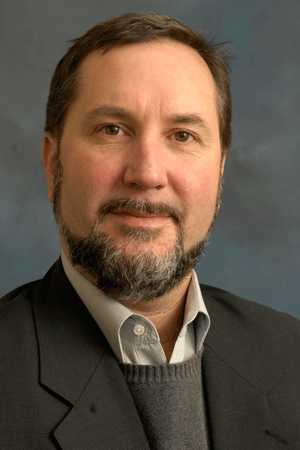Graphic warning labels on cigarette packages focus of R01 grant. Do these labels deter, halt smoking?
October 16, 2012
 As tobacco industry seeks expansion to new markets,
As tobacco industry seeks expansion to new markets,
Dr. Jim Thrasher is studying how policies and mass
media influence smoking.
Dr. Jim Thrasher of the Arnold School of Public Health will use a $2.7 million grant from the National Institutes of Health to continue his research on the impact of graphic warning labels on cigarette packages to deter or halt smoking.
The prestigious RO1 grant will comprise a series of studies that focus on different kinds of pictorial, graphic warning labels on cigarette packaging to determine their impact on adult smokers in Australia, Canada, Mexico and the United States.
“Tobacco use continues to be the No. 1 leading cause of preventable deaths in the United States and around the world,” said Thrasher, a faculty member in the Department of Health Promotion, Education, and Prevention. “Graphic health warning labels are among the most cost-effective public health interventions that exist.”
Although the graphic warning labels on cigarette packaging isn’t being used in the United States yet, each of the other countries in the study has developed labeling policies that are innovative and that the U.S. government should consider, Thrasher said.
Mexico began using graphic warning labels in September 2010 and changes the warnings every three months, which is the fastest rotation of new warnings in the world. Canada is increasing the size of its warning labels to cover 75 percent of the front and back of packages. Sixteen new warning labels currently circulate that include testimonials from smokers and, unlike other countries in the world, focuses on quit assistance.
“You can’t miss the messages,” said Thrasher, who has an adjunct research and faculty appointment at the University of Waterloo, Canada, and the Mexican National Institute of Public Health, where he led research to develop and select the warning labels used in Mexico.
Starting December 1 of this year, Australia’s graphic warnings will become the largest in the world and will take packaging policy one step further. The brand logos and colors will be prohibited, and all brand names will be in the same color and same font size, with the same olive green background. The only distinction among cigarette brands will be the brand name, he said.
“We will further develop the science base for policy development around warning label content, design, size and rotation frequency, particularly in the United States where tobacco industry litigation has halted implementation of new warnings,” he said.
In the first part of the study, researchers will follow 1,000 smokers in Australia, Canada, Mexico and the United States and will interview the 4,000 participants every four months over a two-year time period.
“We have selected three countries that have adapted policies that are novel. We want to determine how well their different approaches work, both in the beginning and after people get used to them and start paying less attention to the warnings,” he said. “The goal is to figure out which policy works best over time, both to inform consumers about smoking-related risks and to reduce the death and disease that smoking causes.”
Ultimately, Thrasher wants to share the evaluations with the Food and Drug Administration, which can decide which warning labels to put on tobacco products in the United States and which needs scientific evidence from studies like his to address recently successful litigation by the tobacco industry.
The FDA had selected graphic warning labels for inclusion on cigarettes in the United States, starting this fall. However, a U.S. appeals court in Washington, D.C., recently ruled in favor of five tobacco companies that claimed the labels violated their free speech. The appeals court ruling sets the stage for a possible ruling by the U.S. Supreme Court, Thrasher said.
It is critical for the FDA policy making to be based on scientific understanding of which public health policies are most effective in reducing tobacco use and helping consumers better understand smoking risks,” he said.
“We all know that smoking is dangerous. But consumers should know the range and severity of these dangers. Consumers have a right to be informed about the products they consume,” he said.
For 15 years, Thrasher has studied how policies and mass media influence smoking, both in the United States and around the world where other countries have been implementing innovative policies to prevent tobacco use. He is concerned about the increasing influence of the tobacco industry in low- and middle-income countries, as the industry tries to develop new markets.
His work also will be of importance to the World Health Organization, which has adopted the “Framework Convention on Tobacco Control (FCTC)” to help countries help each other to develop and implement the most effective policies and programs to address the global epidemic of tobacco use. The first international treaty to be negotiated under the auspices of WHO, the FCTC was adopted by the World Health Assembly on May 21, 2003, and entered into force on Feb. 27, 2005.
The FCTC, one of the most rapidly and widely embraced treaties in United Nations history, was developed in response to the globalization of the tobacco epidemic and represents a milestone for the promotion of public health. It also provides new legal dimensions for international health cooperation.
Adopted and ratified by most of world, the RCTC has not been ratified by the United States.
Thrasher concedes that smoking will never go away completely. “But warning labels increase consumer understanding of smoking-related risks and diseases. This understanding is critical to addressing the tobacco epidemic that is spreading to newer markets,” he said. “Our research is having an impact on public health around the world.”



_01.jpg)
_02.jpg)